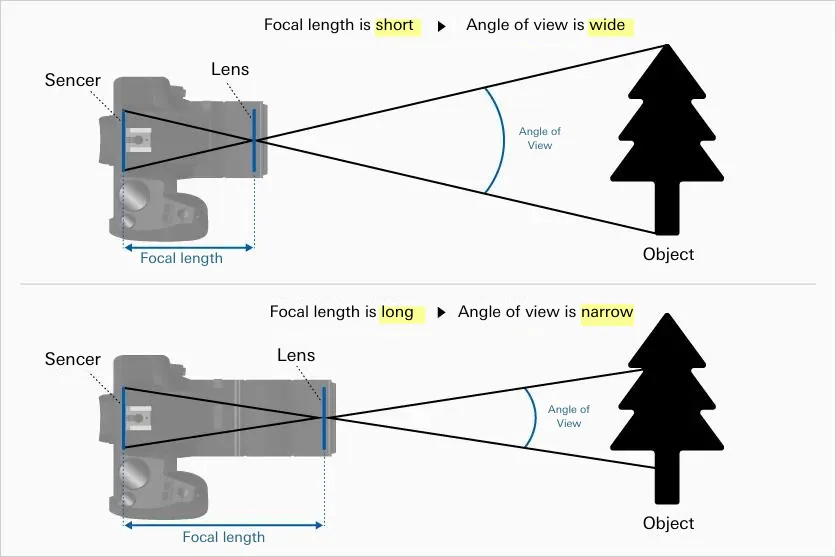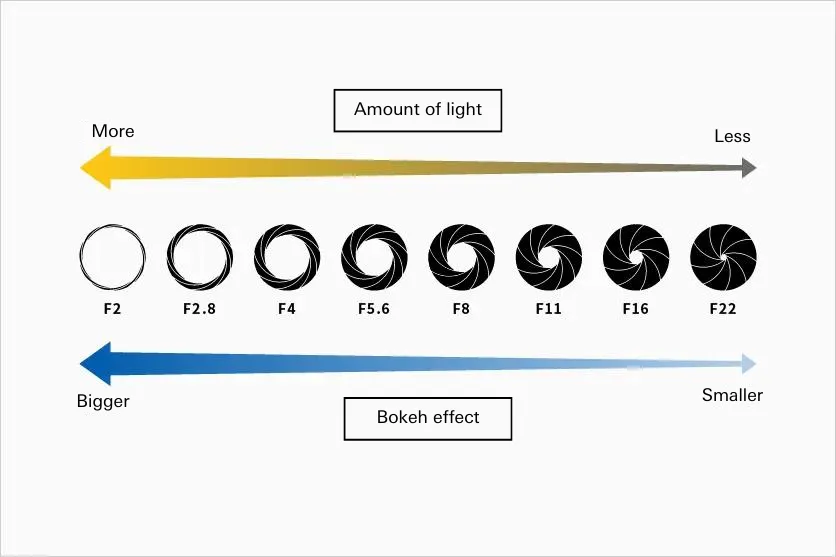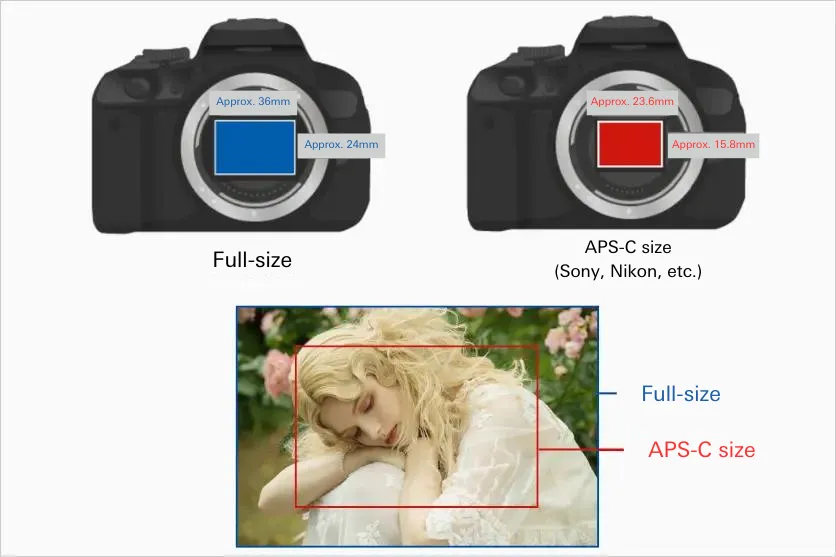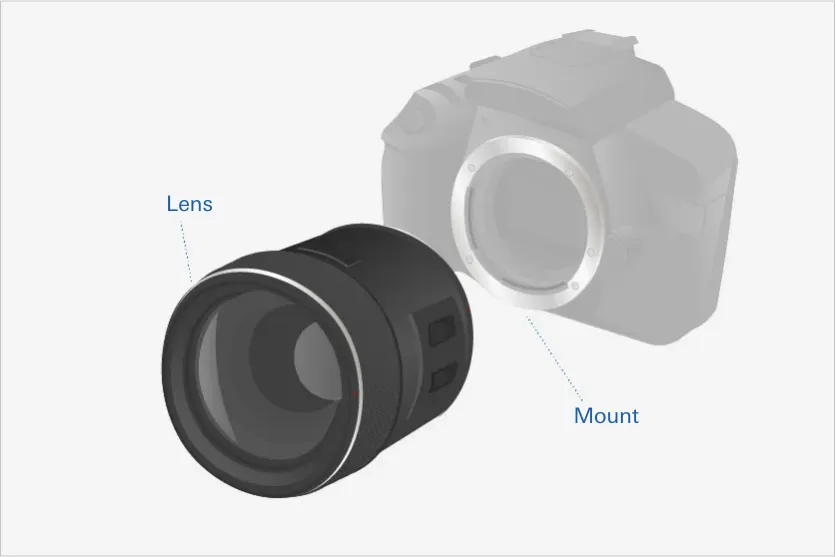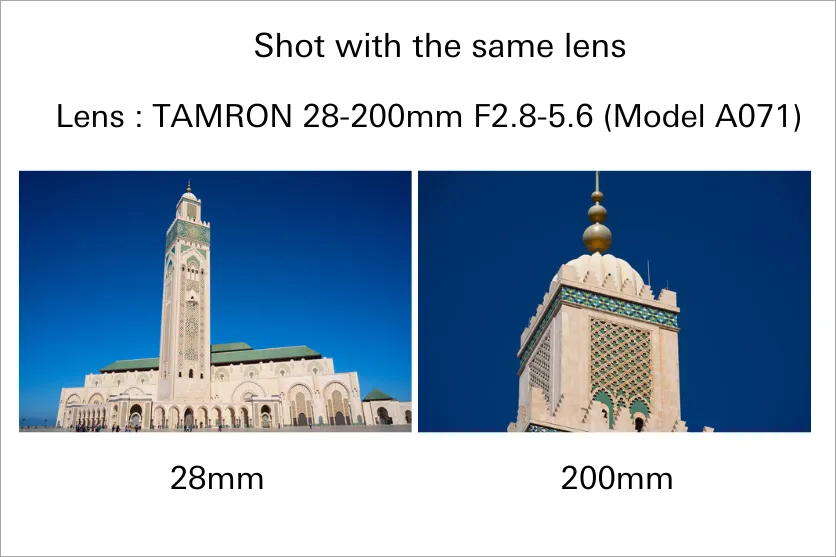April 26, 2024
Basic knowledge about lens types and how to choose a lens – showing recommended lenses for beginners!
Basic knowledge about lens types and how to choose a lens – showing recommended lenses for beginners!
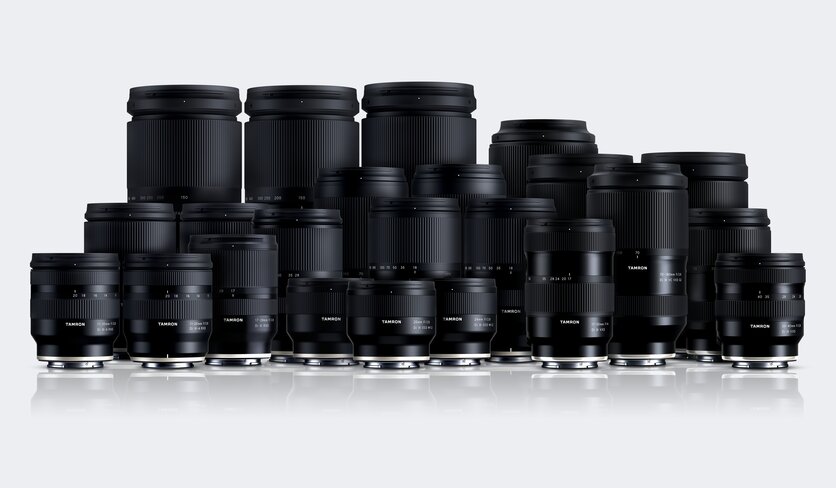
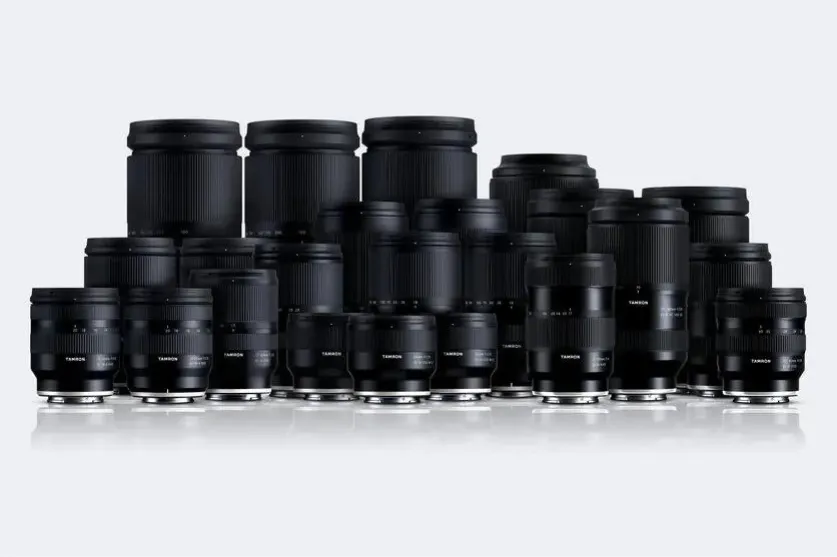
Many people may have bought a DSLR or mirrorless camera but feel overwhelmed by all the different types of lenses and jargon. In this article, we will provide detailed explanations of the terms commonly used in the world of photography, the characteristics of each kind of lens, and how to choose the right lens for the right situation. Familiarizing yourself with this basic knowledge will make it easier to understand the strengths and weaknesses of different lenses.
Focal length indicates the distance from the lens (principal point) to the image sensor (or film surface). The shorter the focal length, the smaller objects will appear, and the wider the angle of view. The same works in reverse - the longer the focal length, the larger objects appear, and the tighter the angle of view.
The angle of view is an angle expressing how wide range a lens can capture. Lenses with a short focal length are referred to as wide-angle lenses. These lenses have a large angle of view that allows a wide range to be captured. On the other hand, lenses with a long focal length are referred to as telephoto lenses. These lenses have a small angle of view and can capture faraway objects with an enlarged view.
Related article : What is focal length? Explanation of basic knowledge about angle of view and focal length
F-number is also referred to as aperture. This number indicates the amount of light that enters a camera from the lens. F-number is calculated by dividing the focal length by the lens’s effective diameter (the actual diameter that a ray of light can pass through).
F-number (F)= focal length (f) ÷ lens effective diameter (D)
The smaller the F-number, the greater the amount of light passing through the lens. As a smaller F-number also produces a shallow range over which objects are in focus (depth of field), it produces bokeh (defocused blurring) in front of and behind the subject that is in focus.
On the other hand, a bigger F-number reduces the amount of light entering from the lens and makes a photo darker. A bigger F-number (“stopping down” or narrowing of the aperture) also produces a larger depth of field, increasing the range of what is in focus in front of and behind the subject.
Sensor size refers to the size of the image sensor responsible for converting the light received from a lens into electrical signals. The size of an image sensor significantly affects the quality and performance seen in captured images. There are two main types of image sensors for mirrorless cameras: full-frame and APS-C.
If an APS-C compatible lens is fitted to a full-frame camera, vignetting (a phenomenon in which parts of an image and the corners are darkened and obscured) can occur, so it is important to choose a lens that matches the sensor size. Note that some full-frame camera models can automatically switch between full-frame and APS-C modes.
The full-frame sensor size is the same as 35mm film, specifically 36mm × 24mm. Full-frame cameras can capture photos with high image quality and feature an extensive lineup of available lenses. As a note, if you attach a full-frame telephoto lens to an APS-C camera, it will become more telephoto by 1.5x (approximately).
A mount is an adapting part that connects a camera body to a lens. The mount not only plays to role of physically connecting the camera body and the lens but also exchanges electronic information.
For this reason, the mount system varies by camera manufacturer. When choosing a lens, you need to select one that matches the lens mount of your camera.
The name of a lens contains important information indicating the characteristics and functions of the lens. That’s why you should have a good understanding of what the different terms that appear in lens names mean.
First, let’s look at a lens name of “150-500mm F/5-6.7 Di III VC VXD”, what is expressed under this name.
In this case, “150-500mm” indicates the focal length range, and “F/5-6.7” indicates the F-number range.
The letters listed after the F-number indicate the type of autofocus and VC (Vibration Compensation) mechanism. These notations are unique to each manufacturer.
Other information included in the lens name could be a series or model name such as “SP” and “Model A057,” or the name of the lens mount. Additionally, focal length is displayed in millimeters (mm). For a prime lens, only one figure for focal length will be shown, rather than a range.
The above information is a rough guide on how to read the information in lens names, but actual details may vary by manufacturer or lens type. That is why it is important to thoroughly check the specifications of the equipment you use.
A zoom lens lets you freely adjust the focal length on a single lens. For example, with a 28-200mm zoom lens, a user can freely change the focal length between 28mm to 200mm to adjust the angle of view. In addition, since a zoom lens can cover a wide range of focal lengths, its greatest advantage is the ability to handle a wide range of subjects and situations with the use of a single lens.
While zoom lenses are very convenient, they tend to have a higher figure F-number (smaller apertures, the amount of light coming through the lens is smaller) than prime lenses. That is why prime lenses are regarded as better at producing photos with a large amount of bokeh (lower figure F-number have shallow in-focus range).
To improve photography skills, it is also important to cultivate a sense of “moving back and forward against your subject” and “getting creative with the angle of view.” A downside to zoom lenses is that you will find it hard to develop that intuition if you rely solely on them.
A prime lens is a lens with a fixed focal length. For example, for a prime lens that claims a 50mm focal length, photos can only be taken at the 50mm angle of view. When you want to change the angle of view, you have to change the distance from the subject yourself.
At first glance prime lenses might seem inconvenient, but it has an enduring popularity. The reason is that lenses with a smaller figure F-number (large aperture) let you take pictures that make the most of bokeh.
For example, in portrait photography, beautiful background bokeh has the effect of allowing the subject to stand out more appealingly. Because the angle of view is fixed it forces you to work with the distance to the subject and will help you to develop a sense of how to make the most of bokeh. Additionally, since prime lenses let in a large amount of light, it is possible to take shots that suppress camera shake and noise even when indoors or in dark locations. However, since you cannot zoom with a prime lens, you need to take appropriate shooting positions based on the subject. That is why a good approach is to use zoom lenses in general and also take one prime lens with you. Additionally, many prime lenses have higher resolving power compared with zoom lenses. Their compact size, light weight, and high cost performance are also reasons for their popularity.
A portrait photo is a photo in which a person is the main subject. A portrait might focus on the face or upper body, or it could be a full-body shot. Portraits often use prime lenses or telephoto lenses to produce bokeh in the background, but another technique is to use a wide-angle lens to get the subject to stand out within a vast landscape.
A similar word is “snap.” Snap" is derived from the English word Snapshot (quick shot), and refers to photos taken instantaneously in a normal, natural atmosphere as if capturing a moment in time. While snaps do not adhere to any specific format or formal photographs, generally portraits are taken after carefully determining the composition and positioning.
Wide-angle lenses in SLR and mirrorless cameras refer to lenses with a focal length of 35mm or less for full-frame cameras, allowing for a wide angle of view. Wide-angle lenses also characteristically have a large depth of field, which allows the background to appear in focus.
Wide-angle lenses emphasize perspective, enabling photos where the background appears to be further away than it actually is. Wide-angle lenses are suitable for landscape, architectural, group, and other types of photography where you want to capture a wide view of the entire subject. These lenses are also commonly used when the subject is too big and cannot be fully captured.
There are various types of wide-angle lenses. These include ultra wide-angle lenses which allow a wider view to be photographed than a regular wide-angle lens, and fisheye lenses that can capture a 180-degree field of view.
Wide-angle lens lineup →
In general, a standard lens provides an angle of view close to that of human vision. The focal length depends on the camera's sensor size, but in the case of a full-size camera, it is around 50mm. As standard lenses render a view that is similar to what you see with your own eyes, they have the advantage of making shots easy to compose and frame.
Due to their ease of use, standard lenses are well suited to a variety of subjects. In addition, standard zoom lenses cover a wide range from wide-angle to medium-telephoto, they are often bundled with camera bodies as kit lenses.
Standard lens lineup →
Telephoto lenses have a long focal length (approximately 80mm or more for full-frame cameras) and a small angle of view, making it possible to magnify a subject at a distance. Because the depth of field is shallow, the background appears blurred showing a smooth bokeh. As the perspective is compressed, the subject and the background appear to be closer to the camera. This phenomenon is called the compression effect.
Telephoto lenses are suitable for situations where the photographer cannot get close enough to the subject, such as athletes and wildlife. Furthermore, by utilizing compression effects telephoto lenses enable dynamic portrait shots with a strong blurred bokeh in the background.
Telephoto lens lineup →
Ultra-telephoto lenses have an even longer focal length than telephoto lenses, at 300mm or more. As these lenses can powerfully zoom in on a subject from a distance, they come in useful when you want to enlarge the subject to a high degree, such as capturing the details of the top area of a tall building you cannot physically get close to. These lenses are also used extensively to photograph skittish birdlife, wild animals such as foxes and squirrels, as well as insects.
Ultra-telephoto lenses produce stronger compression effects than telephoto lenses. This can be used to pull in the elements of distant cityscapes, or to take dynamic shots with mountain ranges and cityscapes captured in the same angle of view.
A macro lens is a lens with large magnification that is specialized for close-up photography. These lenses can powerfully enlarge small subjects.
Specifically, a macro lens has a short MOD (Minimum Object Distance) and a maximum magnification ratio of 0.5x to 1x (1:1 magnification). By using a macro lens, you can capture large views of fine details such as the veins of leaves and flowers, objects reflected in water droplets, insects, and other small objects. Types of macro lenses include wide-angle macro lenses with a short focal length, standard macro lenses with a moderate focal length, and telephoto macro lenses with a longer focal length.
What is appropriate for a lens, such as focal length, depends on the subject or scene to be photographed. For example, when capturing a wide landscape, a wide-angle lens is appropriate, while a telephoto lens is best suitable for shooting distant objects. Think carefully about what, where, and how you want to photograph something, and choose the lens that best fits your needs.
Factors such as AF, VC mechanisms, and weather resistance performance can be highly effective depending on the shooting conditions and the movement of your subject. Try to imagine the scenes you will actually be shooting in, checking things like whether you will be carrying the equipment around for long periods, how the light is filling in at the shooting environment including nighttime and indoor scenes, whether your subject(s) will be moving or stationary, and whether you can use the equipment even on rainy days.
The size and weight of a lens affect the burden of carrying your camera and its maneuverability and mobility while shooting. Particularly when shooting for extended periods or taking a camera for travel, a lightweight and compact lens is convenient.
Now let’s look at some recommended lenses for more specific situations.
When choosing a lens as a beginner, first try shooting a wide variety of subjects with a standard zoom lens, such as a camera-kit-lens. It is important to understand at an intuitive level what kinds of subjects a standard lens is well suited for shooting, and what subjects it is not suited for.
Next, consider a wide-angle lens if you want to shoot a wider area, such as a landscape, or a telephoto lens if you want to shoot sports events or portraits. If you want to take photos that make use of bokeh or shoot in dark locations, a lens with a small F-number (large aperture) will make shooting easier. Additionally, as an all-in-one zoom lens is a convenient lens that covers focal lengths from wide-angle to telephoto range in a single package, we strongly recommend one as the next step up from a standard lens.
Lastly, let’s take into account weight, size, and functionality. A lens that is as light as possible is easier to handle. Additionally, lenses with advanced functionality such as built-in VC are also recommended for beginners.
-
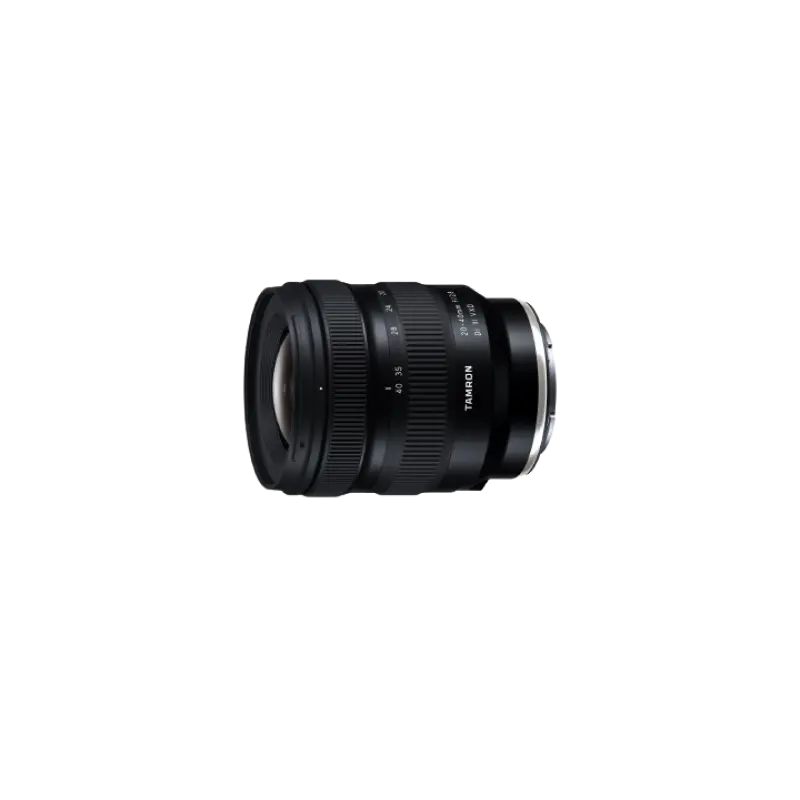
-
20-40mm F/2.8 Di III VXD a062(Model )
The 20-40mm F/2.8 Di III VXD (Model A062) is a new large-aperture standard zoom lens that thoroughly pursues portability. While covering the range from the ultra-wide angle of 20mm to the standard range of 40mm, it is the smallest and lightest in its class. It also offers high image quality throughout the entire zoom range, making it useful not only for still image shooting but also for video recording such as vlogging. The VXD, which is quiet and agile, achieves high-speed, high-precision autofocusing. It is a new, unprecedented large-aperture standard zoom lens that allows users to easily enjoy taking out and shooting both still and video.
-
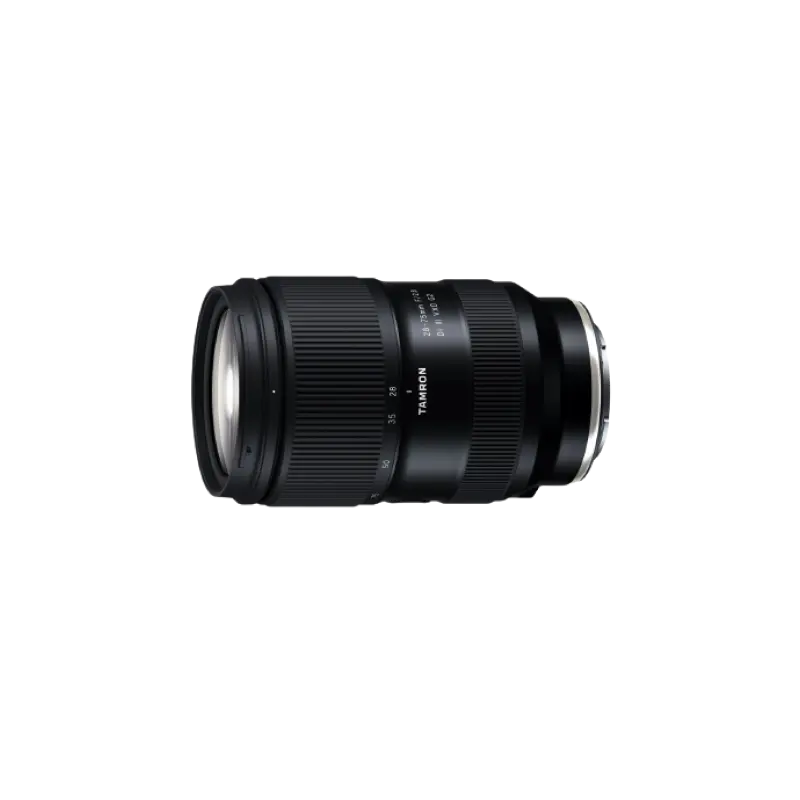
-
28-75mm F/2.8 Di III VXD G2 a063(Model )
28-75mm F/2.8 Di III VXD G2 (Model A063) is the second-generation fast-aperture standard zoom lens for Sony and Nikon full-frame mirrorless cameras, offering significantly improved optical and autofocus performance and new function customization.
An 85mm prime lens is generally recommended for portrait photography. However, we recommend a lens that can cover compositions that include the background, facial expressions, and one-quarter headshots all in a single lens.
When shooting portraits using a telephoto lens, your photos will be more impactful thanks to the beautiful bokeh they produce. However, when shooting indoors with a telephoto lens, subjects will appear large in your viewfinder as the distance you can take will be limited, making it difficult to compose shots. That’s why portraits are best suited to outdoor or large indoor locations when using a telephoto lens.
-
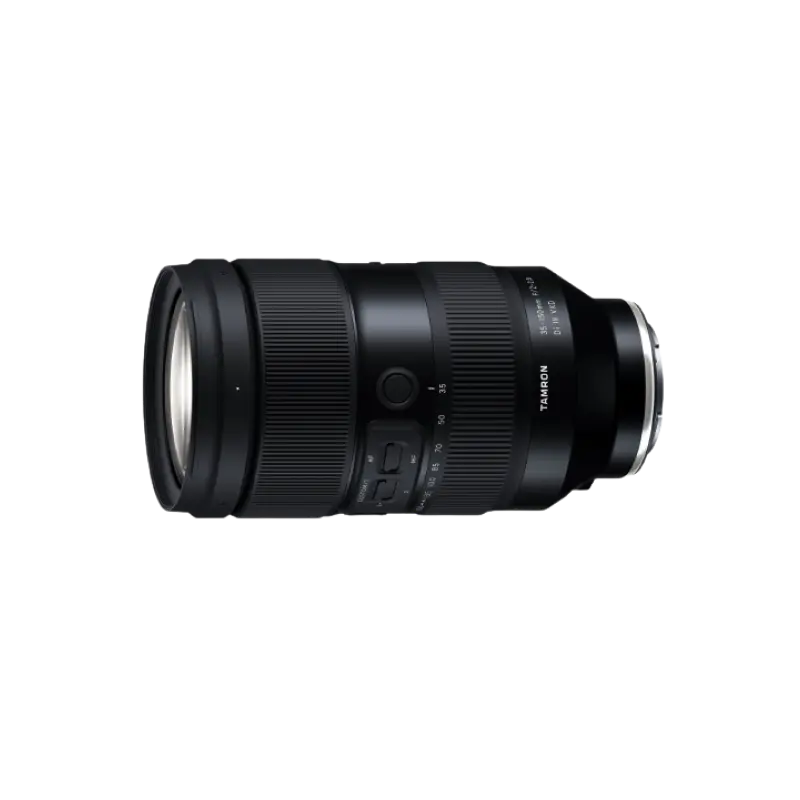
-
35-150mm F/2-2.8 Di III VXD a058(Model )
The 35-150mm F/2-2.8 Di III VXD (Model A058) is a high resolution travel zoom lens that covers everything from the 35mm wide angle to the 150mm telephoto focal length, the first zoom lens achieving an aperture of F2 at the wide angle end. It has a groundbreaking fast-aperture and utilizes the linear motor focus mechanism VXD (Voice-coil eXtreme-torque Drive), thereby achieving high speed, high precision autofocusing. The innovative lens design enabled us to greatly improve the lens's grip and functionality. The software, developed in-house, enables to easily customize functions and to update firmware.
If you want to take landscape photos, a wide-angle lens is a good choice because it can capture a large area in great detail. Wide-angle lenses feature a wide angle of view, and you can capture vast scenes. Moreover, as wide-angle lenses emphasize perspective, you can also take photos that have a strong sense of depth. However, due to the short focal length, people in photos may appear distorted or may be smaller. Therefore, care should be taken when shooting landscapes and people together.
-
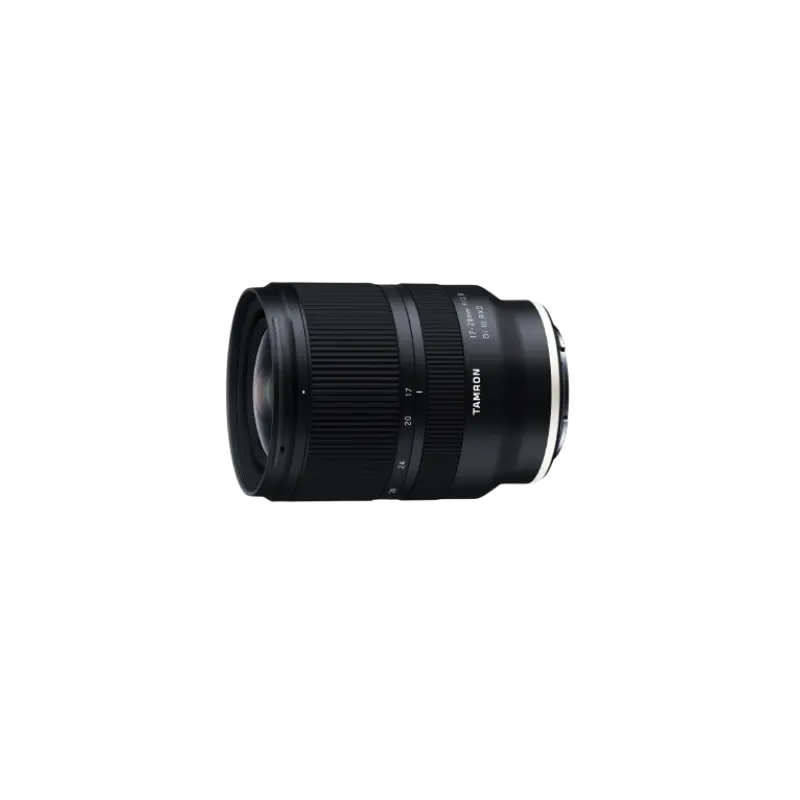
-
17-28mm F/2.8 Di III RXD a046(Model )
The 17-28mm F/2.8 Di III RXD (Model A046) achieves a filter diameter of ø67mm, which is surprising for a large aperture ultra wide-angle zoom lens for full-frame cameras. It’s small and light weight with a good camera balance. It's a dedicated lens for mirrorless interchangeable -lens cameras that can be carried easily and can be used in various situations.
When you want to shoot sporting scenes, the best lens varies depending on the subject.
When shooting sports, there is often a distance between the photographer and the subject. When you want to focus on an individual from a distant location like in these situations, use a telephoto lens. However, when you want to capture the atmosphere of the entire field, a wide-angle lens is recommended. This will allow you to capture the atmosphere of the entire venue and express the sense of being there. Try and use these lenses in the most effective way to reflect the shooting situation.
-
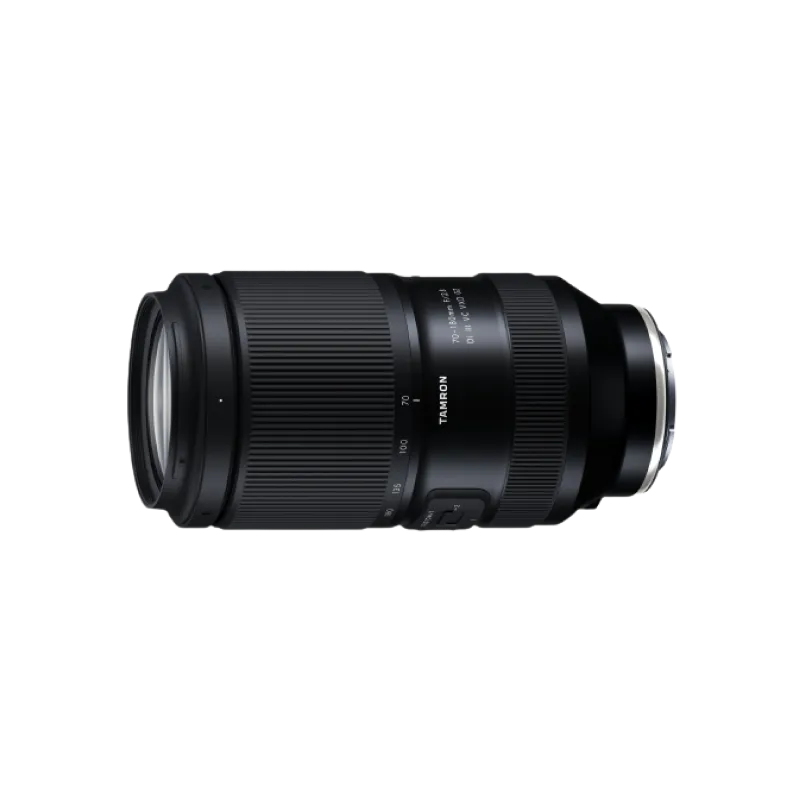
-
70-180mm F/2.8 Di III VC VXD G2 a065(Model )
70-180mm F/2.8 Di III VC VXD G2 (Model A065) has evolved to G2 level.This is the world’s smallest and lightest, fast-aperture telephoto zoom lens for Sony E-mount with astounding portability and superb image quality.
Birds and other wildlife tend to be skittish, fleeing before you have the chance to take a photo when you approach them. Additionally, locations with wildlife often make it difficult to get close to a subject due to geographical limitations.
Due to these factors, an ultra-telephoto lens that lets you get a tight view of a subject even from far away is a good choice. If a lens has a focal length of between 300mm and 500mm, you will be able to take powerful photos of subjects even while maintaining appropriate distances.
-
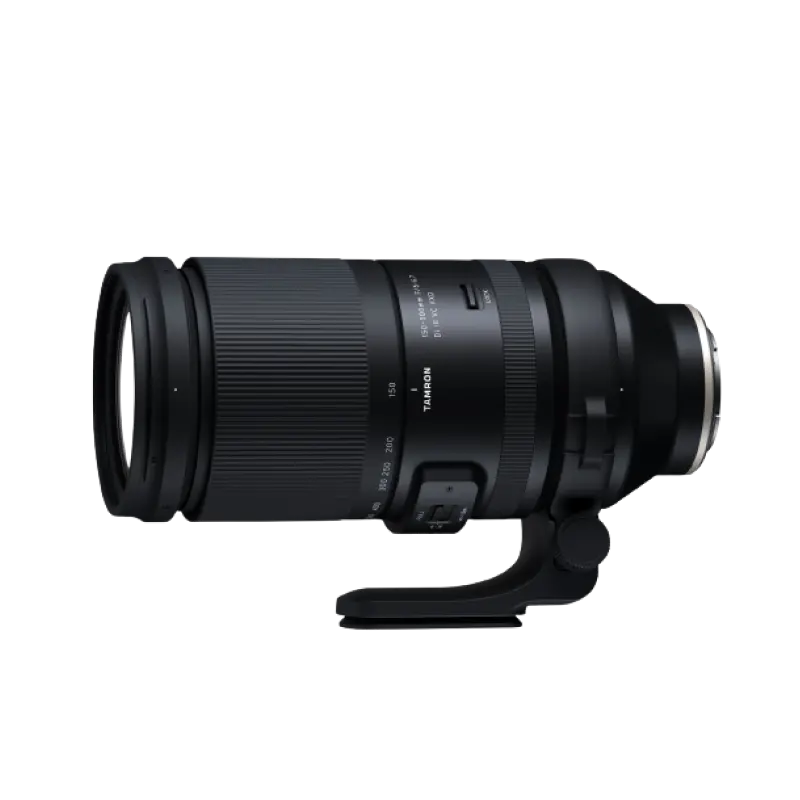
-
150-500mm F/5-6.7 Di III VC VXD a057(Model )
The 150-500mm F/5-6.7 Di III VC VXD (Model A057) is compact enough to be handheld while maintaining a focal length of 500mm on the telephoto end. It allows users to easily enjoy the world of the 500mm ultra-telephoto lens while maintaining its high image quality. The high-speed, high-precision AF with excellent tracking performance and the VC mechanism support handheld shooting in the ultra-telephoto range.
In order to take photos you want, it is important to understand lens characteristics and use lenses that are appropriate for each subject. As each type of lens has strengths and weaknesses, try to choose the lenses that are best suited for each situation.
That’s why it is important to properly understand not just the characteristics of each lens, but technical terms such as F-number and sensor size.

Lens Featured in this Impression
-
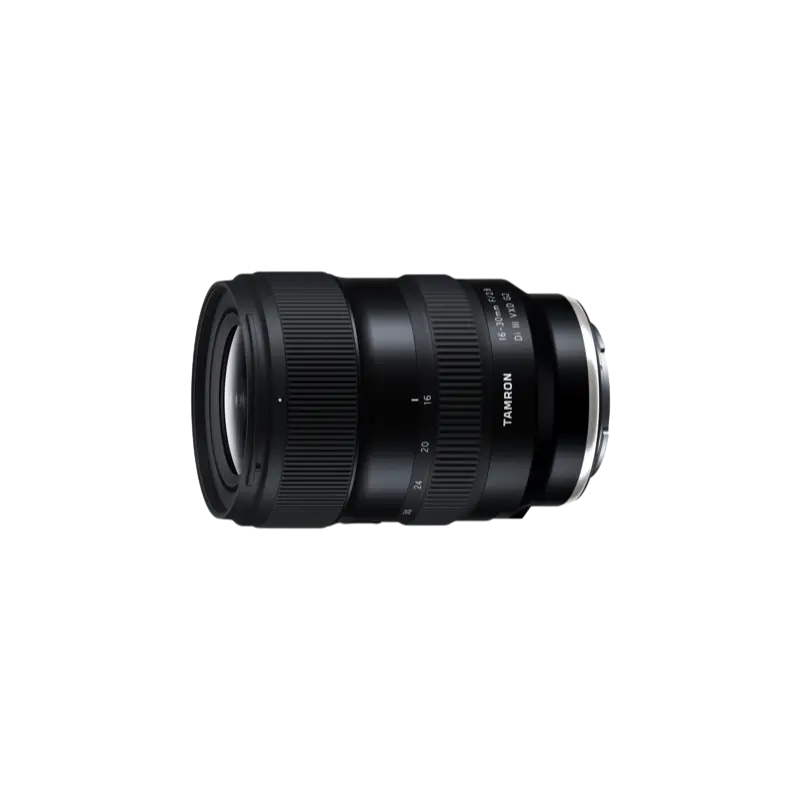
-
16-30mm F/2.8 Di III VXD G2 a064(Model )
Expanding upon the success of the highly acclaimed TAMRON 17-28mm F/2.8 Di III RXD (Model A046), the G2, 2nd-generation emerges as an advanced 16-30mm F/2.8 Di III VXD G2 (Model A064). While broadening the zoom range, it maintains a compact, lightweight design and delivers exceptional image quality. In addition, it features improved autofocus performance and has been updated to the latest lens design, enhancing overall operability. It’s also compatible with TAMRON Lens Utility™, allowing you to customize practical functions for both photography and videography. Retaining the mobility and versatility of its predecessor, the 16-30mm F2.8 G2 unlocks new creative possibilities. Experience the unique creative expressions that only a fast, ultra wide-angle lens can offer.
-

-
28-75mm F/2.8 Di III VXD G2 a063(Model )
Product Page | 28-75mm F/2.8 Di III VXD G2 (Model A063) is the second-generation fast-aperture standard zoom lens for Sony and Nikon full-frame mirrorless cameras, offering significantly improved optical and autofocus performance and new function customization.
-

-
70-180mm F/2.8 Di III VC VXD G2 a065(Model )
70-180mm F/2.8 Di III VC VXD G2 (Model A065) has evolved to G2 level.This is the world’s smallest and lightest, fast-aperture telephoto zoom lens for Sony E-mount and Nikon Z mount with astounding portability and superb image quality.
-

-
35-150mm F/2-2.8 Di III VXD a058(Model )
The 35-150mm F/2-2.8 Di III VXD (Model A058) is a high resolution travel zoom lens that covers everything from the 35mm wide angle to the 150mm telephoto focal length, the first zoom lens achieving an aperture of F2 at the wide angle end. It has a groundbreaking fast-aperture and utilizes the linear motor focus mechanism VXD (Voice-coil eXtreme-torque Drive), thereby achieving high speed, high precision autofocusing. The innovative lens design enabled us to greatly improve the lens's grip and functionality. The software, developed in-house, enables to easily customize functions and to update firmware.
-
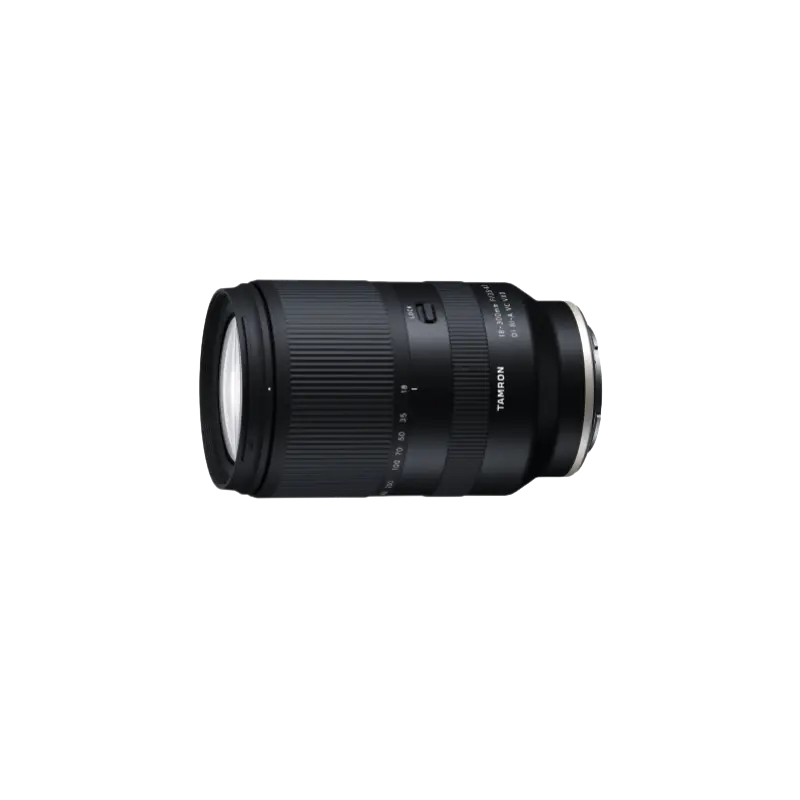
-
18-300mm F/3.5-6.3 Di III-A VC VXD b061(Model )
The 18-300mm F/3.5-6.3 Di III-A VC VXD (Model B061) achieves 16.6x zoom and is equipped with the VXD for a quiet and agile AF drive. The optical construction includes several special lens elements, specifically four LD (Low Dispersion) and three hybrid aspherical lens elements. These elements help to produce clear, sharp images from the center to the corners and deliver top-level image quality in its class. It is enabled close-up shooting and is equipped with the VC system. The 18-300mm F/3.5-6.3 makes photography more fun because you can use it in an unlimited number of situations. It’s so versatile, it will inspire you to push your creativity further and further.

